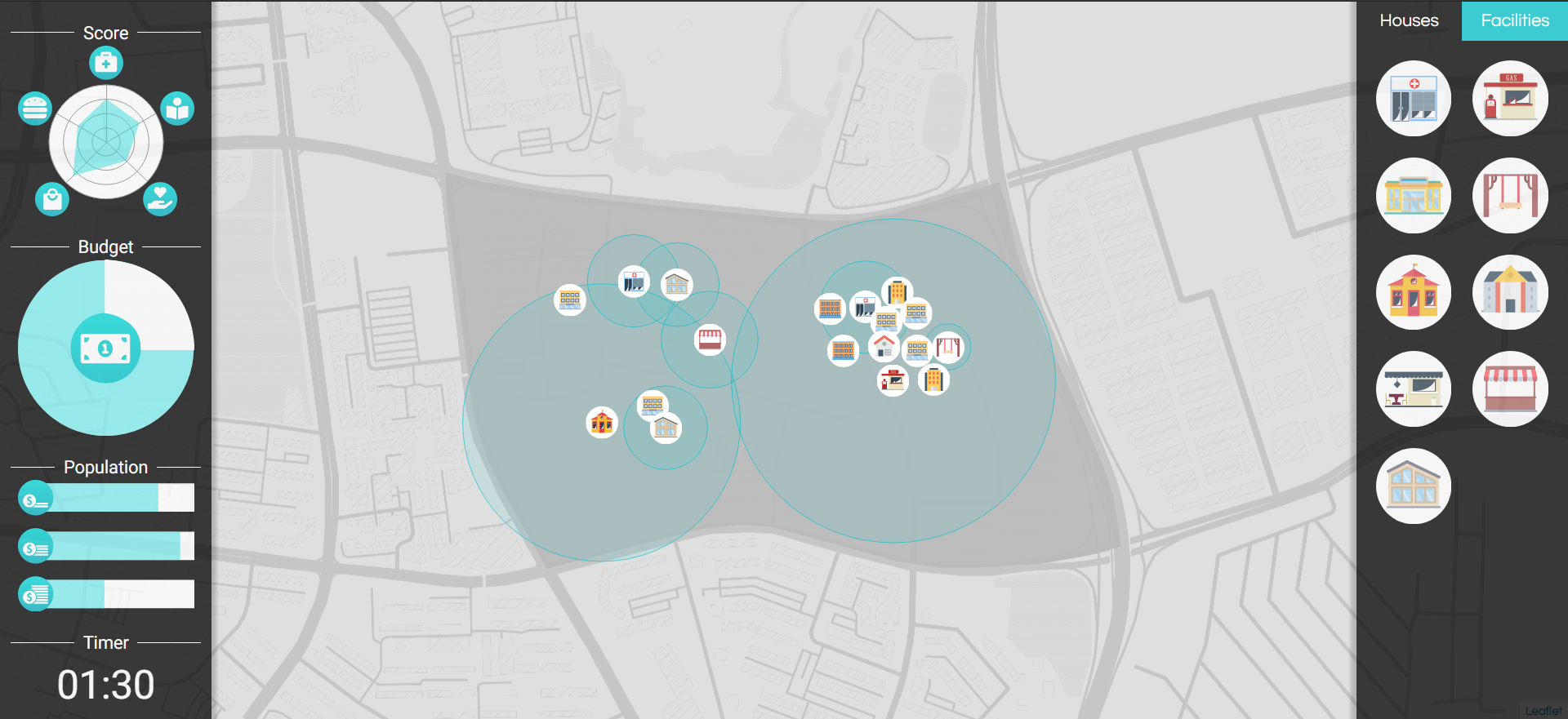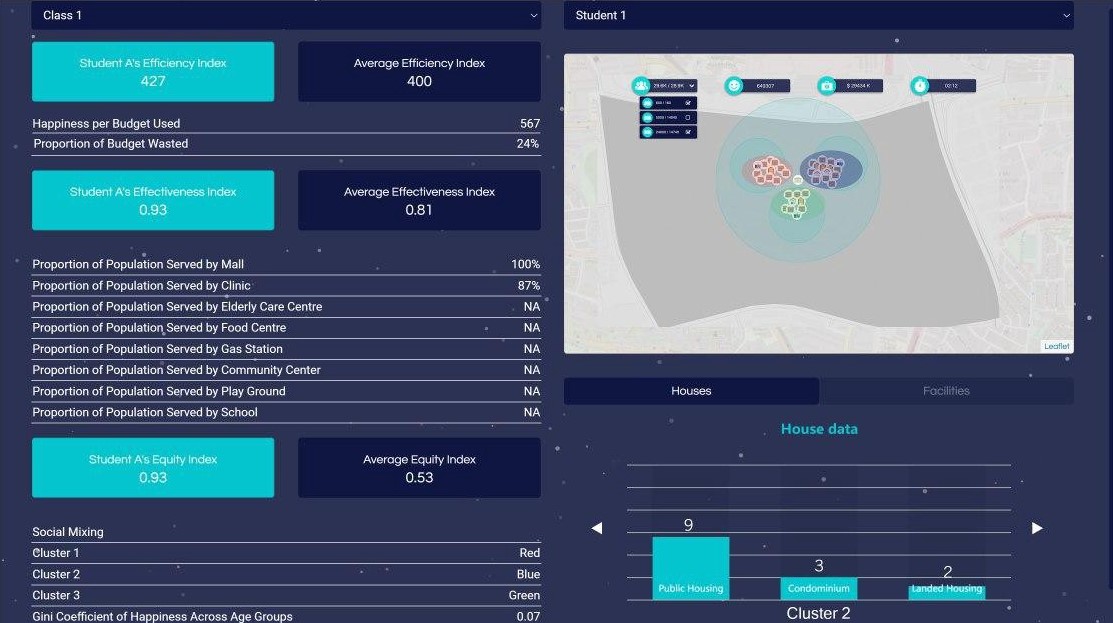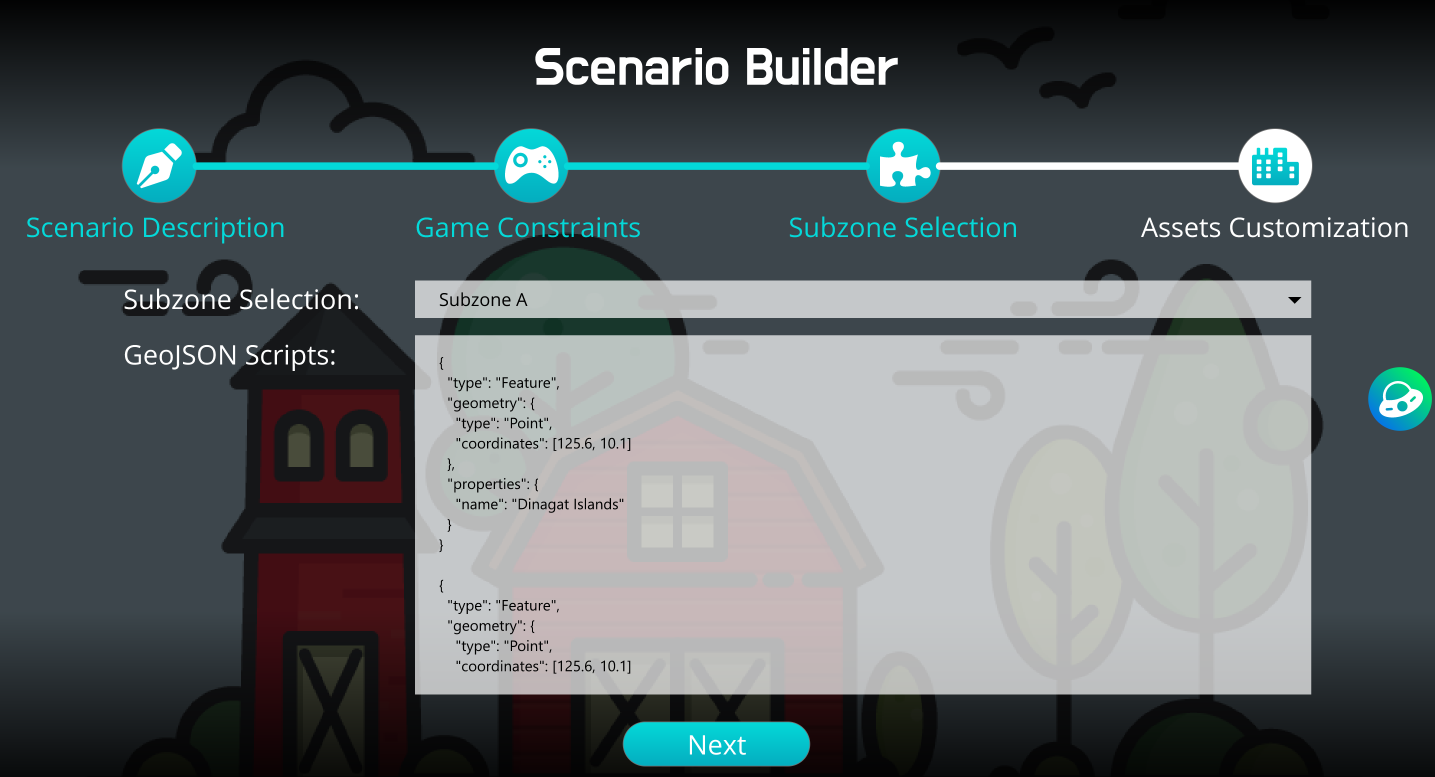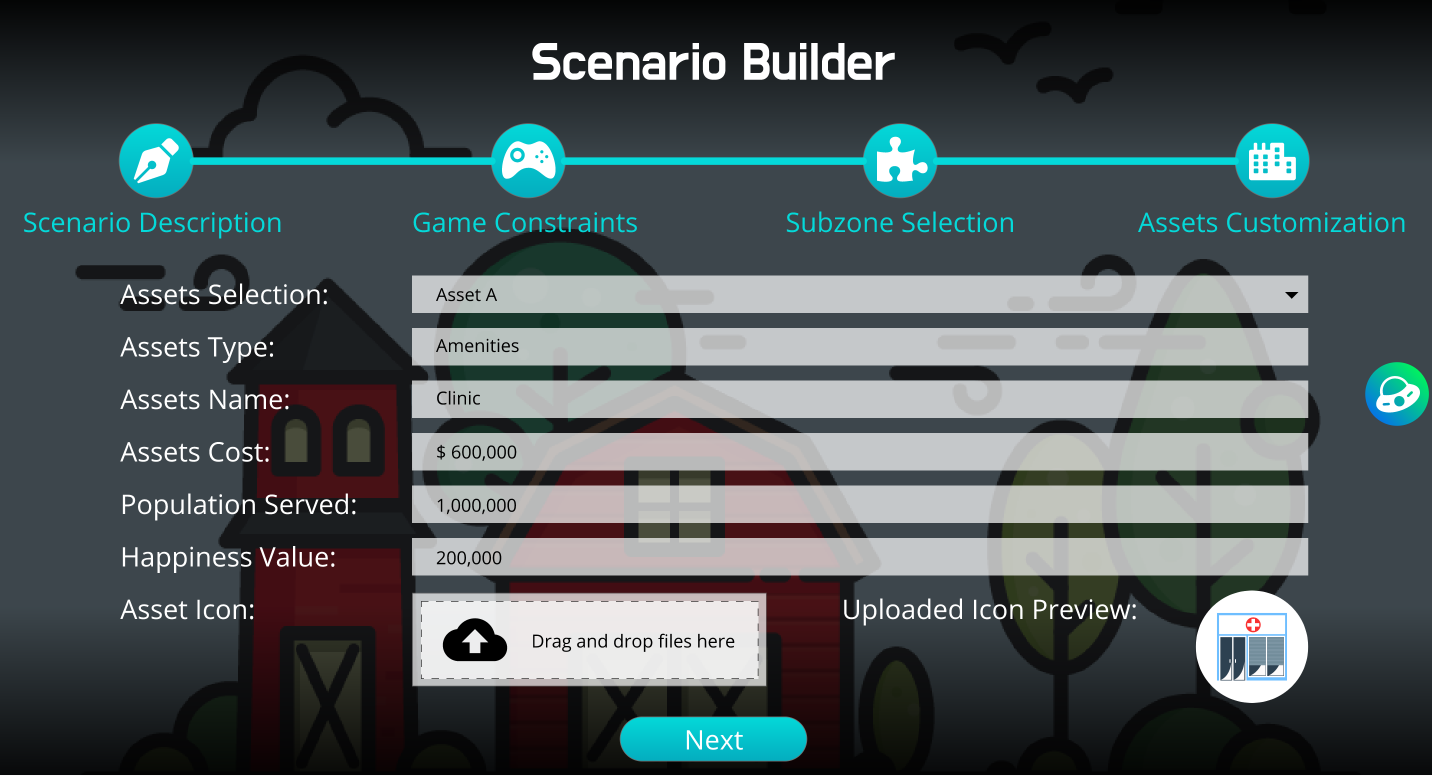A smart-nation and digital economy neccessitates a data-literate community. Embracing data literacy should rightfully start with students, as they will be the pioneers of our digital future. Unfortunately, there are currently few tools that impart data literacy in a fun and engaging manner to students. Additionally, the tools in the market merely impart analytical skills with no relation to existing academic rigour or curriculum. Thus, this technology provides a two-pronged solution to pursue these opportunities. The technology introduces fun, interactive, and strategic games that impart data literacy to students for a data-driven future. While being entertained through gamification, students are able to learn school subjects such as geography, social studies, and accounting, and also simultaneously train their analytical thinking.
Contain randomized levels/scenarios for dynamic, distinctive gameplay, keeping learning fresh.
Accomodate customizable parameters for educators to add more variety to their lessons and create their own assignments such as:
- Levels
- Scenario Builder
- Lesson Content Builder - either in text, videos or forms
- Asset Creation
- Import Analytics - dashboarding tools to assess student learning
- Leaderboards and Achievements - to stimulate competition amongst students
Various industries can take advantage of this technology. Some examples include:
- Schools that conduct lessons on incorporating data literacy skills. It can also be used for gamified projects and assignments.
- Tuition centres that want to adopt novel methods of teaching and learning to stimulate interest beyond the classroom.
- There is also interest in showcasing this tehnology for urban planning festivals specially curated for secondary school and pre-university students, to excite them about urban planning through workshops, talks and other activities. Teachers and urban planners would be able to see a wider range of facilities that have larger effects on liveability, such as parks, as well as upgrading of the visuals from 2D to 3D to enable more spatial possibilities.
- Enhancing interactivity and engagement of teaching
- Impart data literacy and analytical thinking to students
- Improve and reinforce learning outcomes of students
- Increase students' overall interest and competence in technology



